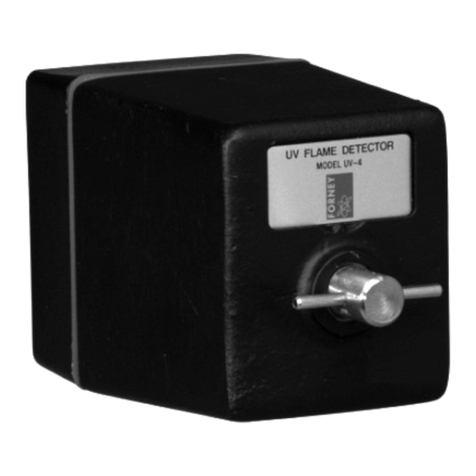
IDD Flame Detector Heads Manual
372000-05 Rev J
ii
TABLE OF CONTENTS
Section 1 Description ..................................................................................................................................3
Figure 1 Dimensional drawing –IDD Standard housing.................................................................3
1.1 IDD CEX .........................................................................................................................................4
Figure 2 Dimensional drawing –IDD CEX.....................................................................................4
1.2 Mechanical Specifications...............................................................................................................5
1.3 Safety...............................................................................................................................................6
Section 2 Installation...................................................................................................................................7
2.1 Installation Procedure ......................................................................................................................7
2.1.1 IDD-CEX Mounting Flange ...............................................................................................8
Figure 3 Detector Sighting...............................................................................................................8
Figure 4 Detector Location VS. Secondary air rotation...................................................................9
Figure 5 IDD Direct Mount Arrangement .....................................................................................10
Figure 6 IDD Swivel Mount Arrangement ....................................................................................11
Figure 7 IDD Direct Mount with Cooling Chamber......................................................................11
Figure 8 IDD Swivel Mount Arrangement with Cooling Chamber...............................................11
Figure 9 IDD-CEX Direct Mount Arrangement...........................................................................12
Figure 10 IDD-CEX Swivel Mount Arrangement.........................................................................12
Figure 11 IDD-CEX Direct Mount Arrangement with Cooling Chamber ....................................13
Figure 12 IDD-CEX Swivel Mount Arrangement with Cooling Chamber ...................................13
2.2 Detector Wiring .............................................................................................................................14
Figure 13 Sample Wiring Diagram for IDD Detector Head to Amplifier....................................14
Section 3 Commissioning..........................................................................................................................14
3.1 Checkout Procedure.......................................................................................................................14
3.1.1 Initial Checkout.................................................................................................................14
3.1.2 Operational Checkout .......................................................................................................14
Section 4 Operation...................................................................................................................................15
Section 5 Troubleshooting........................................................................................................................15
TABLE 1: IDD Detector Head Troubleshooting..........................................................................15
Section 6 Maintenance..............................................................................................................................16
Section 7 Storage.......................................................................................................................................16
Section 8 Return or Repair Service.........................................................................................................16
Section 9 Parts...........................................................................................................................................17
TABLE 2: IDD Detector Head Assembly Parts ...........................................................................17





























